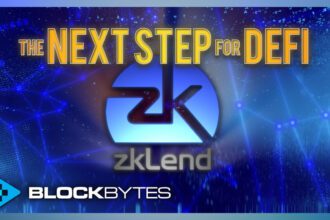On March 10th, blockchain payment tech company and USD Coin issuer Circle confirmed that wires initiated last Thursday to remove balances from Silicon Valley Bank had not yet been processed. This leaves $3.3 billion of Circle’s $40 billion USDC reserves still in limbo within the now-defunct Silicon Valley Bank.
This catalyzed USDC and several other stablecoins to depeg from their 1:1 value with the US dollar.
But how could a stablecoin as large as USDC depeg? What is the extent of Circle’s exposure to failing U.S. banks?
What are Stablecoins?
Stablecoins are designed to be a reliable store of value and medium of exchange compared to more traditional cryptocurrencies like Bitcoin and Ethereum.
Stablecoins can be collateralized by Fiat money, other cryptocurrencies, and/or commodities such as gold or silver. USDC and Dai are examples of stablecoins pegged to the U.S. dollar and backed by other assets.
Stablecoins can also be algorithmically stabilized through smart contracts and other mechanisms that automatically adjust the supply of the stablecoin to maintain its peg to the underlying asset.
USD Coin
USD Coin (USDC) is a cryptocurrency designed to maintain a constant value of USD 1. Each USDC is redeemable for one dollar and is backed by one dollar or a dollar-denominated asset with the equivalent value held in accounts at regulated U.S. financial institutions. Those accounts are audited by U.S. accounting firm Grant Thornton LLP, which issues monthly attestations on the reserves backing USDC.
USDC is the second-largest stablecoin, with a $42 billion circulating supply as of Jan. 31.
Why do Stablecoins depeg?
Stablecoins can depeg due to a combination of micro and macroeconomic factors. Micro factors include shifts in market conditions, such as an abrupt increase or decrease in stablecoin demand, problems with liquidity, and modifications to the underlying collateral. Macro variables involve changes in the overall economic landscape, such as inflation or interest rate increases.
How did USDC depeg?
Circle troubles began on March 10th when it announced that $3.3 billion of its $40 billion of USDC reserves remained at the now-defunct Silicon Valley Bank (SVB).
Concerns had been growing over USDC exposure as Circle’s January audit revealed that the firm has over $8.6 billion in cash held in various U.S.-regulated financial institutions, including Silvergate and SVB. This figure represented roughly 20% of its reserves used to back USDC.
Before the announcement, USDC was sitting below its $1 peg at $0.98, as per CoinGecko data. After Circle’s Twitter announcement, the price dropped significantly, with its lowest price hitting $0.87 on March 11th.
On Friday, Circle burned some $1.6 billion USDC, taking out the tokens from circulation as investors redeemed dollars. Circle also minted new coins, adding to the circulation, but much less than it destroyed. To reduce exposure, crypto companies, including Coinbase and Jump Trading, redeemed approximately $850 million and $138 million USDC, respectively.
This led to a domino effect, leading to several major stablecoins losing their peg to the US dollar. DAI, USDD, USDP and FRAX were affected, amongst others.
The Bounce Back
The battling stablecoin has seen promising signs towards returning to its 1:1 peg after Circle CEO Jeremy Allaire assured customers that USDCs reserves are safe and the firm has new banking partners lined up to ensure operations are open for business on Monday morning.
This announcement coincides with a joint statement from the U.S Federal Reserve Chairman Jerome Powell, U.S Treasury Secretary Janet Yellen, and FDIC Chairman Martin Gruenberg, which assured investors that “[SVB] Depositors will have access to all of their money starting Monday, March 13”.
The CEO outlined that things will move quickly as he revealed that Circle is “bringing on a new transaction banking partner with automated minting and redemption potentially as soon as tomorrow.”
Closing Thoughts
The statement from Allaire and the Federal Reserve announcements has been followed by a significant pump for asset prices across the board. The total crypto market cap is now above $1 trillion following its sharp drop to $961 billion on March 11.
Today, Monday, March 13th, USDC has regained its peg. Making this man’s week even worse.














